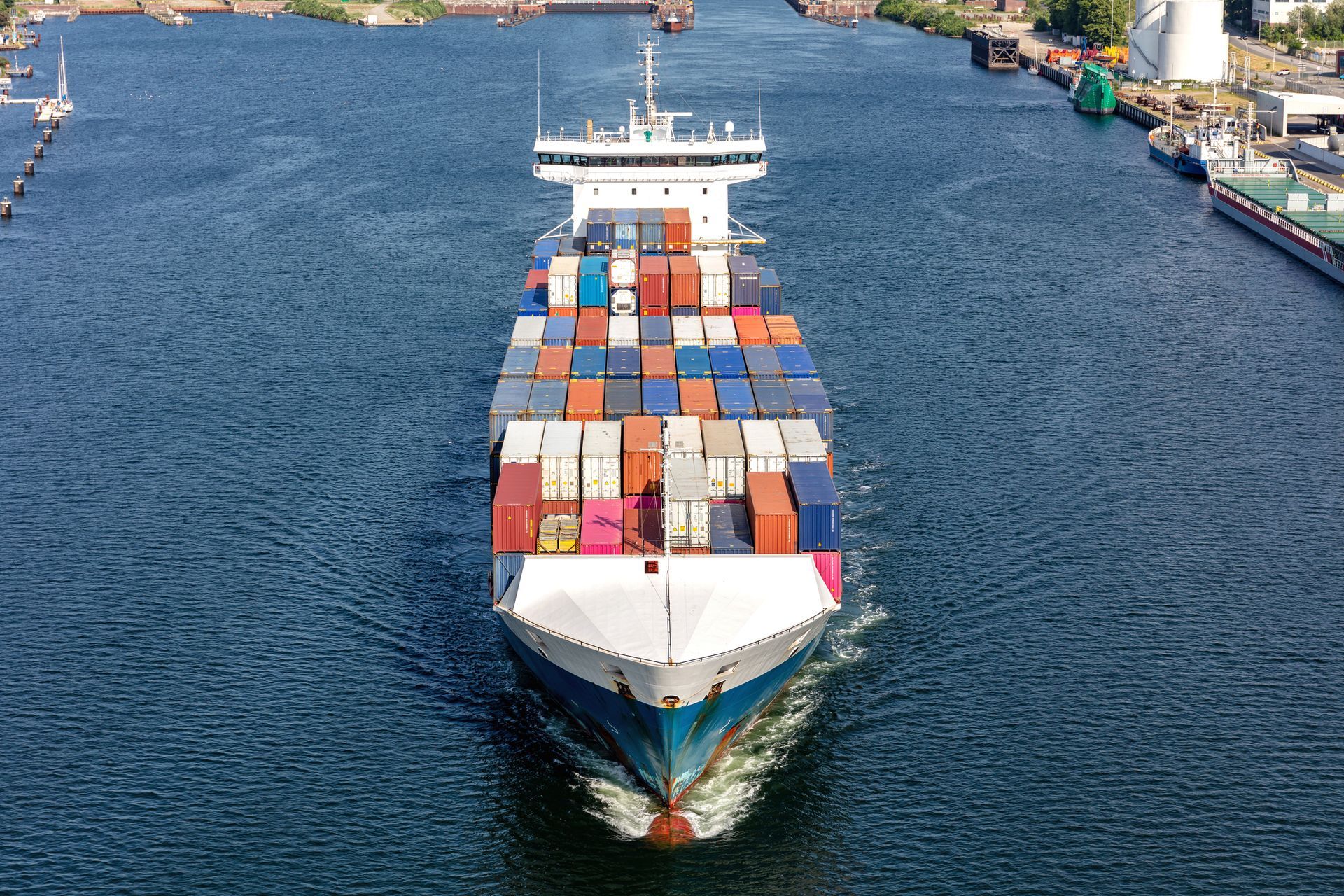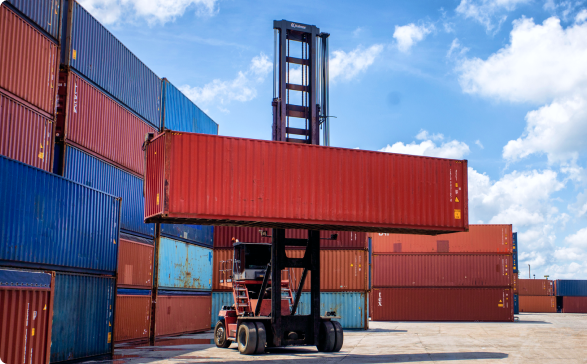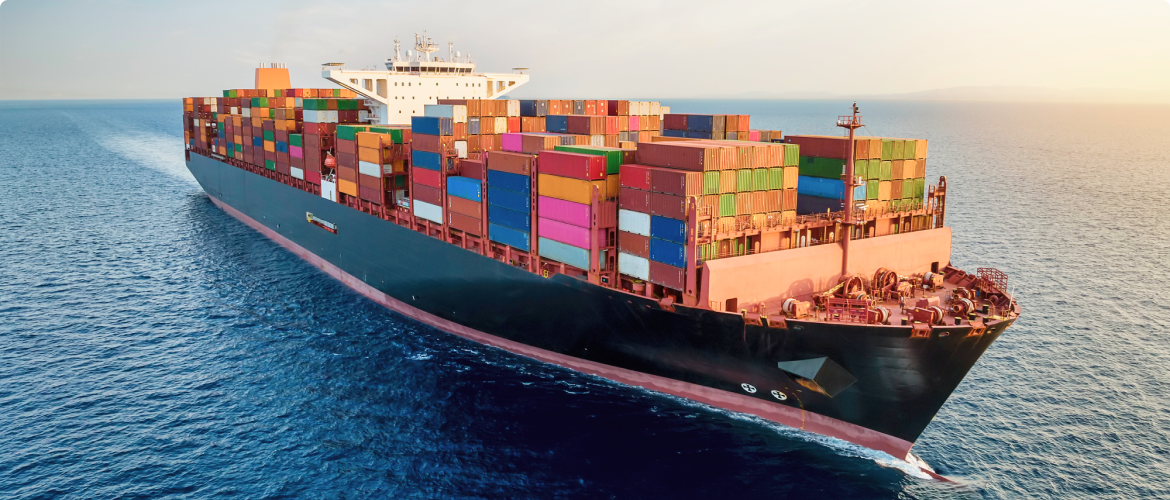By Carla Vieira
•
February 26, 2025
Our country, with its vast territorial and coastal extension, has a network of ports that are essential for international trade. In this article, we will navigate through the 10 main Brazilian ports, highlighting not only their history and relevance but also how they manage different types of cargo, from full loads to LCL. Each port has its uniqueness, and throughout this reading, you will gain a comprehensive view of this vast logistical mechanism that connects Brazil to the world. Join us on this journey! Brazilian Port Structure Due to its vast territorial extension and geographical diversity, Brazil has a significant network of port facilities, covering both the extensive coastline and inland areas. In total, the country boasts 175 cargo port facilities, comprising ports, maritime terminals, and waterway installations. As we delve deeper into the country's internal geography, we recognize the richness of our river basins, which have been essential for establishing ports and terminals within the national territory. There are 76 terminals located inland, distributed as follows: 18 in the South Region, 6 in the Midwest Region, and a significant number of 52 in the North Region. These numbers testify to the importance of river navigation and inland waterways as a means of transportation and national production flow. In contrast to this extensive inland network, there are 99 ports and maritime terminals strategically positioned along our coastline. These, in addition to being crucial to the country's economy, connect Brazil to different parts of the world, enabling the export and import of a wide range of products. Thus, Brazil's port structure not only reflects the country's geographical diversity but also highlights its capacity for integration and interconnection between different regions, facilitating trade and sustainable development. The list of Brazilian ports, as we have seen, can be extensive. However, below, we have gathered the 10 main ports in Brazil that are most relevant for import and export: Port of Santos When discussing Brazilian international maritime trade, it is essential to highlight the Port of Santos. Its relevance is not limited to the contemporary period: as early as the 14th century, the Santos region, along with the village of São Vicente, played a strategic role in accessing the continent’s river basins, notably the Río de la Plata, which connects Brazil, Uruguay, Paraguay, and Argentina. According to data from the American Association of Port Authorities, the Port of Santos ranks 43rd among the world's largest ports and holds the distinction of being the only Latin American port among the top 44. Its figures are impressive: annually, the port handles around 4.1 million TEUs (standard units equivalent to 20-foot containers), establishing itself as Brazil’s main port in terms of tonnage and container volume transported. Specifically, in 2024, the Port of Santos handled 179.8 million tons of cargo, standing out as the country’s leading customs clearance unit. Regarding imports, the port was responsible for handling approximately $62.8 billion, with an exact amount of $62,839,535,049.00 . Similarly, in the export sector, it maintained its dominance, with transactions totaling approximately $72 million, reaching $72,163,311,047.00 . Port of Paranaguá One of Brazil’s most emblematic port facilities, the Port of Paranaguá, has deep historical roots. Established alongside the Captaincy of Paranaguá in 1853, its initial functions were primarily those of an anchorage. However, in less than two decades, precisely in 1872, the site was officially elevated to port status. Even then, it stood out as one of the largest port infrastructures in the country. The trajectory of the Port of Paranaguá is marked by constant evolutions. Between 1926 and 1933, under the supervision of the Paraná state government, a series of improvement works were carried out, further enhancing its capacity and efficiency. One of the most remarkable symbols of this port's strength and relevance is the Paranaguá Container Terminal (TCP). This terminal holds the title of the largest in South America in its category, representing a landmark not only for the state of Paraná but for the entire continent. With a rich legacy and cutting-edge operational capacity, the Port of Paranaguá remains one of Brazil's main gateways for goods, playing a strategic role in national and international trade. Port of Itapoá Among Brazilian ports, the Port of Itapoá stands out as a modern and efficient structure, strategically located on the northern coast of Santa Catarina. Since its opening in 2011, this port has quickly become one of the most important in the country. The secret to its success lies in its deep draft and cutting-edge infrastructure, capable of handling large vessels and high cargo demand. Another highlight of the Port of Itapoá is its proximity to major production centers in the South and Southeast of Brazil, making it a crucial hub for foreign trade operations. Port of Navegantes The Port of Navegantes, located in Santa Catarina, is home to the Portonave Terminal, a reference in the national logistics scenario. Since its inauguration in 2007, the port has gained prominence due to its modern infrastructure and high cargo handling efficiency. One of its key strengths is its strategic location, close to industrial hubs and major road networks, facilitating the flow of goods to different regions of Brazil. The Port of Navegantes is also recognized for its sustainable operations, implementing measures that reduce environmental impact and improve operational efficiency. Port of Suape Located in Pernambuco, the Port of Suape is one of the most modern and dynamic ports in Brazil. Its main differential is its industrial and port complex, which integrates industries and logistics operations in the same space. The port stands out in handling liquid bulk, including fuels and chemicals, in addition to operating in containerized cargo and project cargo. With a privileged location on the Northeast coast, the Port of Suape plays a fundamental role in regional and national development, attracting investments and boosting the local economy. Port of Rio de Janeiro The Port of Rio de Janeiro, with its historical importance and strategic location, is one of the oldest and most relevant ports in Brazil. Over the years, the port has undergone modernization and expansion, ensuring its efficiency in handling different types of cargo, including containers, vehicles, and solid bulk. Its proximity to industrial areas and its connection to the country's main highways and railways make it an essential logistics hub for import and export. Port of Vitória The Port of Vitória, in Espírito Santo, is an essential gateway for trade in the Southeast region. With a modern infrastructure and efficient logistics, the port plays a key role in exporting products such as iron ore, steel, and agricultural commodities. Its integration with road and rail networks enhances cargo transportation, reducing costs and increasing the competitiveness of Brazilian products in the international market. Port of Itajaí The Port of Itajaí is the second-largest container port in Brazil and one of the most important in the South region. It operates in synergy with the Port of Navegantes, ensuring high efficiency in cargo handling. With a modern and constantly evolving structure, the port stands out in trade with major global markets, especially in the food and automotive industries. Port of Manaus Located in the heart of the Amazon, the Port of Manaus is a key logistics hub in the North region. Its main characteristic is its role in distributing goods to the entire Amazon region, where river navigation is one of the main transportation modes. The port is essential for supplying the Manaus Free Trade Zone and for exporting regional products, such as wood and agricultural goods. Port of Pecém The Port of Pecém, in Ceará, is one of the fastest-growing ports in Brazil. With a modern structure and a focus on innovation, the port is a benchmark in efficiency and sustainability. One of its key advantages is its proximity to European and North American markets, reducing transit times and making Brazilian exports more competitive. Conclusion Brazilian ports play a fundamental role in the country's economy, ensuring the efficient flow of goods and boosting foreign trade. Each port has its specific characteristics and strengths, contributing to Brazil’s global integration and economic growth. By understanding the relevance of these ports, companies can optimize their logistics and expand their business opportunities in national and international markets.

















